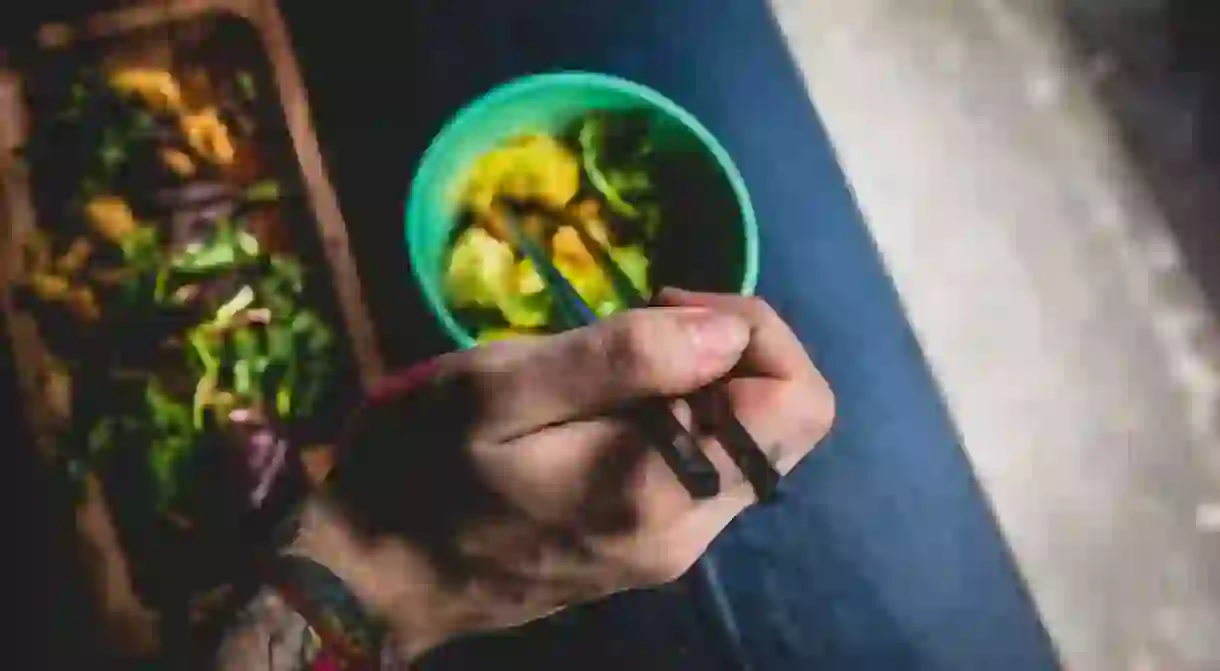How to Eat Your Way Around China as a Vegetarian

You try to order a flesh-free meal but just as you’re tucking in discover chicken lurking among the greens. After scanning the menu for something veggie-appropriate you end up with stodgy beans and rice again. These scenarios will be all too familiar to traveling vegetarians, especially in countries where meat is a staple part of the local diet. With its exotic meaty delicacies, China is arguably the trickiest place of all for veggies, but equipped with the right information you can still enjoy the best of Chinese cuisine.
Eating in restaurants
China is fast developing a fully-fledged wellness scene, but despite becoming increasingly receptive to a range of dietary preferences and restrictions, many Chinese still consider dishes without meat a bit lackluster. Luckily tofu is a popular alternative source of protein, so look out for menu items labelled 豆腐 (dòu fu).
Many noodle based dishes come sans meat, and fried rice with egg and veggies (鸡蛋炒饭, jī dàn chǎo fàn) is also an easy got-to for a well balanced meal you’ll find practically anywhere, including street carts.
Happily, China’s larger cities have plenty of vegetarian restaurants and the Happy Cow website / app will help you discover them. It provides a comprehensive list of veggie / vegan / veg-friendly establishments in your local vicinity, as well as stores with lots of meat-free product options if you’d rather cook for yourself.
Ordering vegetarian food
The language barrier is always a difficult obstacle to navigate, particularly if the country you’re visiting uses a totally different alphabet than you. Practice the phonetic pronunciation of these phrases, and maybe even keep the written version in your phone just in case you have trouble articulating yourself.
I’m a vegetarian:
我吃素。(wǒ chī sù)
I am vegan:
我吃纯素 (wǒ chī chúnsù)
I don’t eat meat:
我不吃肉。(wǒ bú chī ròu)
I don’t eat seafood
我不吃海鲜 (wǒ bù chī hǎixiān)

Vegetarian snacks
Dougan: Tofu comes in many textures in China, but dougan is a firmer variety that’s ideal for snacking on. Look out for the pre-packaged versions that come coated in a moreish sweet-spicy glaze. They’re perfect for a filling protein hit.
Seaweed: Move over kale. Dried sheets of salty delicious seaweed are easy to find in stores, and they’re packed with calcium, magnesium, potassium, copper, iron and iodine.
Spicy lotus root: You’ll come across lotus root in many Chinese dishes, but in crunchy chip form it’s a satisfying snack.
Dried fruit: Although dried fruit tends to have a higher sugar content than fresh fruit, it’s still a great option when you’re on the go and need energy.













